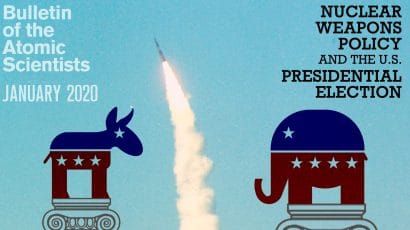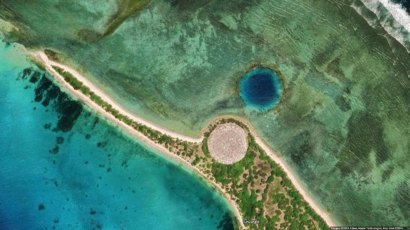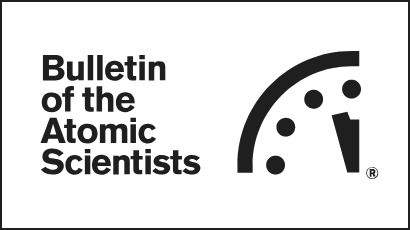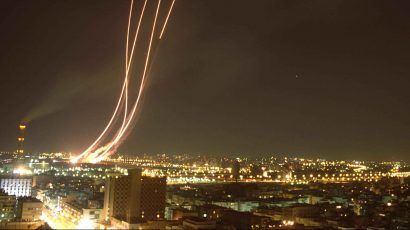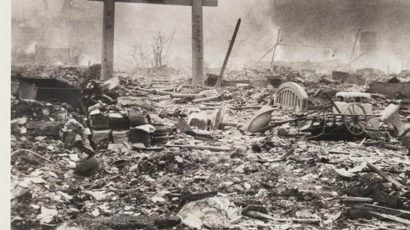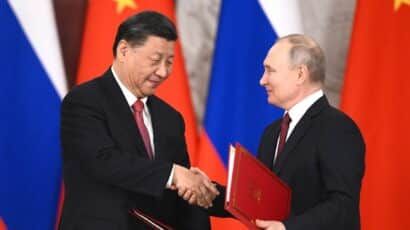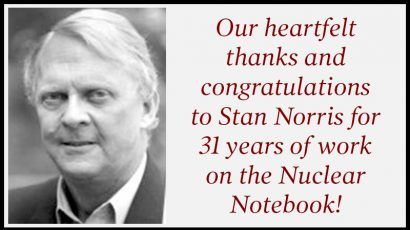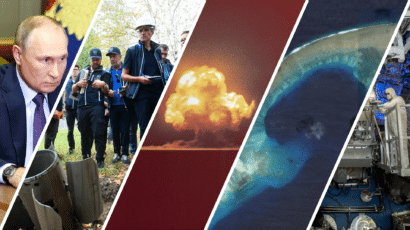Search results for nuclear notebook
JOHN MECKLIN The debates: Why nuclear weapons should be a major focus of the 2020 campaign The first debate between Donald Trump and Joe Biden takes place on September 29th. Dive into Bulletin articles to explore the nuclear weapons questions that citizens and journalists alike should be asking the candidates now, before the election in November. Start … Continued
Introduction: Nuclear testing in the 21st century—legacies, tensions, and risks
Moscow and Washington say they won't resume nuclear testing. But despite what officials say, some evidence could suggest otherwise.
Bulletin experts in the news on North Korea
As the security situation ratcheted up on the Korean Peninsula over the last week, the Bulletin’s staff, leadership, and columnists quickly jumped into action, providing a trusted source of information to help track and make sense of unfolding events. Here is a summary of what we’ve been up to, in case you missed it: Los … Continued
Looking for answers
Tens of thousands of people came to the Bulletin of the Atomic Scientists’ website over the last week, looking for answers on what a new Trump administration means for the health and safety of our planet. As Bulletin editor John Mecklin writes, Donald Trump’s positions on serious questions have often ricocheted from side to side: … Continued
Worried about the autonomous weapons of the future? Look at what’s already gone wrong
When it comes to future autonomous weapons, many governments say they want to ensure humans remain in control over lethal force. The example of the heavily automated air defense systems that militaries use to guard protected airspace shows that doing so will be difficult.
No, Mr. Stephens, the United States doesn’t need more nuclear weapons
In an op-ed entitled “The U.S. Needs More Nukes,” New York Times columnist Bret Stephens laid out his case against arms control: “the bad guys cheat, the good guys don’t,” and all the while, the US nuclear arsenal is becoming “increasingly decrepit.”
It’s a simple narrative; it’s also false. In fact, Stephens’ article is largely littered with bad analogies, flawed assumptions, and straight-up incorrect facts about the nature of nuclear weapons and arms control.
60 years later: How many nuclear weapons did the US and USSR have in the Cuban Missile Crisis?
Just how many weapons did the two sides have during the Cuban Missile Crisis?
The Bulletin of the Atomic Scientists will now publish with Routledge, Taylor and Francis Group
The Bulletin of the Atomic Scientists and Routledge, Taylor and Francis Group are delighted to announce that the Bulletin will be moving into a partnership with Routledge, part of the Taylor and Francis Group, effective January 1, 2016. Today, the rise in geo-political tensions between the West and Russia, ongoing international environmental debates on climate … Continued
Topics
Featured Topics Nuclear Risk Disruptive Technologies Climate Change Doomsday Clock Other Topics Artificial Intelligence Cyber Security Biosecurity What We’re Reading Our Columnists Voices of Tomorrow Interviews Nuclear Weapons Nuclear Notebook Nuclear Energy Magazine Arts Science Initiative Don’t see what you are looking for?
Mapped, photographed, charted: Best of the Bulletin’s visual storytelling
From war footage to AI art, animated illustrations to interactive data, 2022 was the Bulletin’s best year in multimedia yet.
404
Uh oh, we can’t find that page… Search for what you’re looking for here: Browse the Bulletin by topic Artificial Intelligence Biosecurity Arts Science Initiative Climate Change Interviews Nuclear Energy Nuclear Notebook Nuclear Weapons Voices of Tomorrow Don’t see what you are looking for?
How Chinese military aid to Russia could lead to a strategic reversal of nuclear forces
Russia may try to buy massive amounts of Chinese weapons by transferring weapons-grade plutonium—a deal that would have severe, long-term strategic consequences.
Thank you, Stan Norris
The Bulletin of the Atomic Scientists extends its congratulations and heartfelt thanks to Dr. Robert Standish Norris for 31 years of exceptional service. Norris is retiring from his duties as co-author of the Nuclear Notebook, the Bulletin’s authoritative accounting of world nuclear arsenals, compiled by top experts from the Federation of American Scientists. Stan Norris has been researching and preparing the Bulletin’s … Continued
Most likely to succeed against nuclear weapons
Who can be mobilized as a counterweight to the perpetuation of the nuclear arsenal?Workers in the nuclear weapons complex, doctors, independent scientists, and journalists all have direct interests in nuclear disarmament.
Special Issue: The Global Competition for AI Dominance
Special Issue: The global competition for AI dominance The Bulletin’s May/June issue on the global competition for dominance in artificial intelligence (AI) is now available. Here’s a sneak peek at John Mecklin’s introduction. Also in this issue you’ll also find an interview with Greg Jaczko, former director of the US Nuclear Regulatory Commission, and a brand-new Nuclear Notebook: United … Continued
While the world watched US-North Korean negotiations, two nuclear powers squared off
While audiences around the world watched the breathless media coverage of US President Donald Trump’s follow-up summit with North Korean leader Kim Jong Un, the proud owner of perhaps 10-20 nuclear weapons, they may have missed escalating military tensions between India and Pakistan, two countries with almost 300 nuclear warheads between them. The recent crisis … Continued
How to crush the variants that have kept the pandemic going
Will the future of the pandemic look more like life under the delta variant, or more like life during those few weeks or months of early summer when it seemed like COVID-19 might be tamed?
Great things happening on Monday!
A free-access magazine on missile defense. A new website. It's all happening on Monday.
Russia suspends New START and is ready to resume nuclear testing
Experts react to Putin's decision to suspend the New START nuclear arms treaty between Russia and the United States.
The 2022 nuclear year in review: A global nuclear order in shambles
Bulletin's associate editor for nuclear affairs, François Diaz-Maurin, provides his 2022 nuclear year in review, plus seven nuclear stories that marked 2022—and that you should read.
